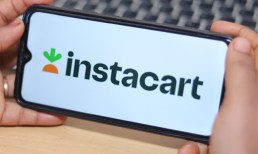Accounts payable (AP) automation offers lofty promises to the enterprise: nix paper, save money, cut out inefficiencies and provide more time for executives to focus on strategic tasks. And yet, many corporates still struggle to take even the beginning steps of automation. Dan Andrew, senior vice president of sales at Corcentric, spoke with PYMNTS ahead of an upcoming digital discussion with Karen Webster — “The Payable to Payments Revolution,” to be held this Wednesday, July 18 at 1:00 p.m. (EDT) — about the daunting task of overhauling AP.
The accounts payable space, he said, has the potential to cause a “dramatic” transformation of the enterprise at large, but the process goes beyond automating invoice processing and payments. It’s an initiative touching many aspects of the enterprise, and for the businesses that have already taken it on, automation has proven it’s worth the effort.
“I’ve watched companies transform accounts payable from a cost center to a profit center,” he said. “Every time, they sit back and say, ‘Wow, we really just turned our department from being in the red to being in the black.’ It really is that simple.”
For companies that are at the beginning stages of this transformation, executives can often find it difficult to achieve what AP automation promises: stronger relationships with vendors, real-time visibility into invoices, accelerating payments and ensuring the capture of early payment discounts. Executives are struggling with taking the first steps, he said, which is getting rid of paper.
“People say things like, ‘You can’t really become paperless,’ or, ‘There’s no such thing as getting rid of paper for accounts payable.’ And we want to say, ‘Yes, actually you can,'” Andrew said.
He welcomes the doubters to join the discussion, urging an open mind among professionals who struggle to envision how their accounts payable departments can, once and for all, let go of manual processes. Embracing this possibility, and taking measures to achieve it, yields significant improvements for the enterprise at large.
Advertisement: Scroll to Continue
Part of what makes this transformation an unbelievable possibility for many firms is the fact that automating accounts payable is a task that touches many aspects of the enterprise — procurement, accounting, IT. Naturally, making the decision to automate can be a daunting task. Adding to the perception of impossibility is the fact that the AP automation process cannot happen solely within the four walls of the organization. Businesses must work with their vendors to make real progress in efficiency — a factor that Andrew said many service providers forget.
“You need to find a way to get suppliers to participate, to onboard them and educate them,” he said. “That’s where a lot of companies fall down. Unless you have positive supplier enablement, then AP automation software is only part of the solution.”
Indeed, overhauling accounts payable from a cost center to a profit center is a lofty challenge, but it’s not one that the enterprise has to take on solo. Andrew said education and collaboration are critical components of the process, and it’s up to service providers like Corcentric to work with clients to address the hurdles — both within and outside the AP department — and achieve what some executives would say isn’t possible.
The process is slow-going, with paper documents, checks and siloes between buyers and suppliers adding friction and preventing businesses from taking the automation leap. Andrew said businesses should tune in to the webinar with an open mind and be willing to let go of the doubt of a paperless future. Not only is it possible, he noted, it’s already happening.
“I’m watching the light go on,” said Andrew. “I watch them go from not believing in this capability, not understanding what it means to go from cost center to profit center, and then succeed. There is a shift in the environment. Someday, all of the paper will be gone and those people leading the charge can truly become champions of their organization.”




